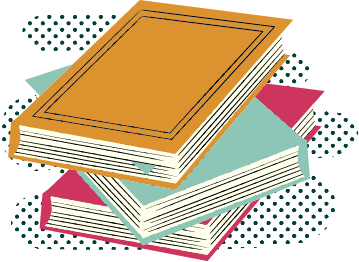How to Choose Materials for Your Bookshelves
by Catherine Anton Baty, MLS (Big Sandy Rancheria)
Introduction
Munahuu! (Hello in Western Mono)
Whether you’re a teacher, guardian, librarian, or simply an individual looking to learn how to make well-reasoned choices with your Indigenous-related reading materials, this guide will help you on that path.
With Indigenous representation, there aren’t hard and fast rules for selection criteria when choosing or evaluating materials. Instead, here is a list of questions to use as guidelines to help you develop your own understanding of what makes a good selection, along with resources for where to begin your research, and formatting suggestions.
To start, consider these questions:
- Is the author/creator Indigenous? Try to discover:
- What is their nation?
- Make it a priority to know specific individual tribal nations. Don’t settle for “Native American” as it is very vague. Seek terms like: “citizen of,” “enrolled,” “member of.” These are frequently used by citizens of tribal nations.
- Look for shorthand including a tribal nation in parenthesis after a name, like; Catherine Baty (Big Sandy Rancheria)
- What is their nation?
- Is the author a member of the nation they are depicting?
- Indigenous peoples are not a monolith. It is possible for one Native to appropriate from another Indigenous culture. Discovering if they are a member of the nation about which they are writing helps to avoid that problem.
- Look in the back matter for consultants from the nation(s) depicted
- It is important for the author to be a member of, or have consulted with members of the nation they are writing about, because:
- Some materials, practices, and ceremony are sharable, and some are privileged information. The layman may not know which is which.
- Just because something is public doesn’t mean that it’s an open practice. Our cultures were recorded by outsiders without thought to how we felt about them.
- What authority does the author have on the subject matter they are writing about?
- Does the author/creator have life experience or other relevant education on the topic?
- Colonial academia is not equal to Indigenous learning spaces.
- Indigenous learning spaces can include, but are not limited to: knowledge passed down from Tribal Elders, formal classes held in Tribal community spaces, learning online from the wider Indigenous community.
- A degree in Native American Studies is extremely broad and Euro-centric.
- Colonial academia is not equal to Indigenous learning spaces.
- Does the author/creator have life experience or other relevant education on the topic?
- Is the book recommended by trusted authorities in Indigenous literature? Consider the authority, and ask:
- Are the authorities trusted and valued by Indigenous peoples?
- The best way to find trusted voices is to look in Indigenous spaces and buy from Indigenous publishers. Please refer to the list below.
- There are always new publishers and voices to find, and so we also suggest looking on TikTok and Twitter to see the discourse between Indigenous peoples. Take time to notice other Indigenous peoples referencing each other in social and professional spaces.
- The following are not authorities: The New York Times bestsellers list, the Canadian Broadcasting Corporation, and other reading lists from non-Native organizations. However, these lists can be great starting places. Consider them with similar weight that you give Wikipedia. Always check the individual books on the lists.
- Here are a few trusted authorities valued by the wider Indigenous community.
- Are the authorities trusted and valued by Indigenous peoples?
- Is the book from a trusted publisher of Indigenous literature?
- What previous works instill trust? Check past publications to see:
- If they’ve been included on Indigenous reading lists.
- If they show the author’s Tribal affiliation.
- Is the publisher recommended by trusted authorities in Indigenous literature?
- Here are a few publishers to start your list. All of these publishers were added to this list because they show open and deep support for Native authorship.
- What previous works instill trust? Check past publications to see:
- Does the book perpetuate stereotypes of Indigenous peoples?
- Are there tropes present, like the “Noble Savage”?
When you are ready to curate your booklist …
We recommend including the author and illustrators tribal affiliation. This will make it easier for others to find works by Indigenous authors in their own searches.
- A sample format may look like this:
- TITLE, by AUTHOR (TRIBAL AFFILIATION)
- ISBN: 0000000000000 Published MONTH YEAR, PUBLISHER
- GRADE LEVEL
- Here are two examples with actual titles.
- The Sea in Winter, by Christine Day (Upper Skagit)
- ISBN: 9780062872050 Published Jan. 2022, Heartdrum
- Middle Grade Fiction
-
- We Are Still Here! NATIVE AMERICAN TRUTHS EVERYONE SHOULD KNOW, by Traci Sorell (Cherokee Nation) & Illustrated by Frane Lessac
- ISBN: 9781623541927 Published April 2021
- Middle Grade Picture Book
Conclusion
Getting new information and using that to weed a collection can be overwhelming at first, but by using the questions and resources laid out in this article we hope that it’s a little easier to get started. This information isn’t meant to set rules, but to give an idea of what should be considered when weeding and building a collection. We learn, do better, and move forward. The more we all work together in creating meaningful book lists with relevant information, the more accessible Native-authored literature will become to educators and guardians everywhere.


